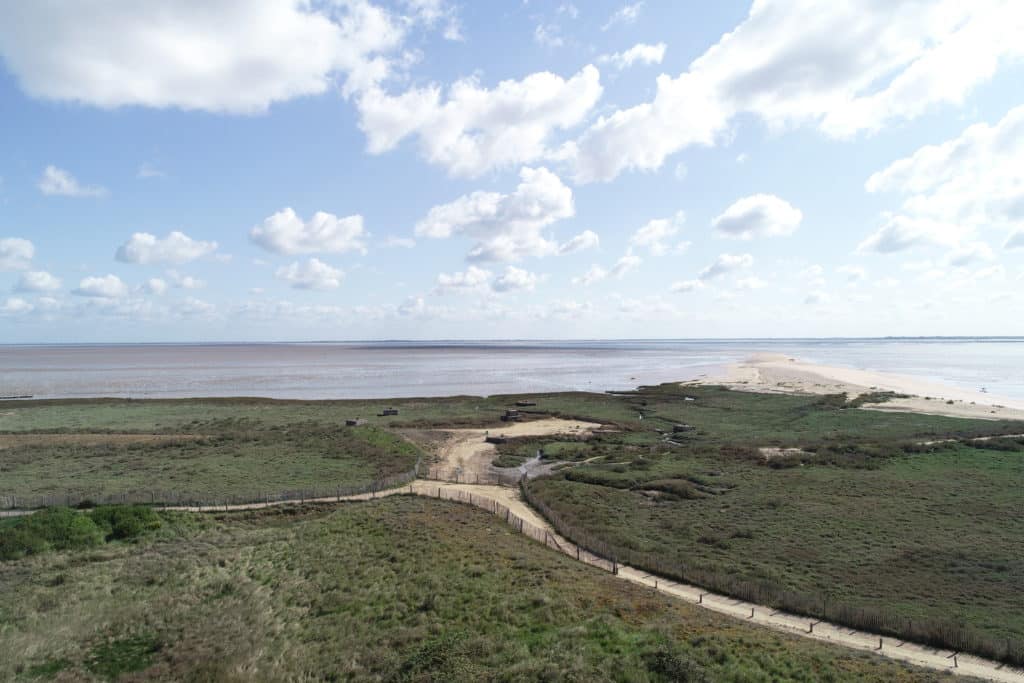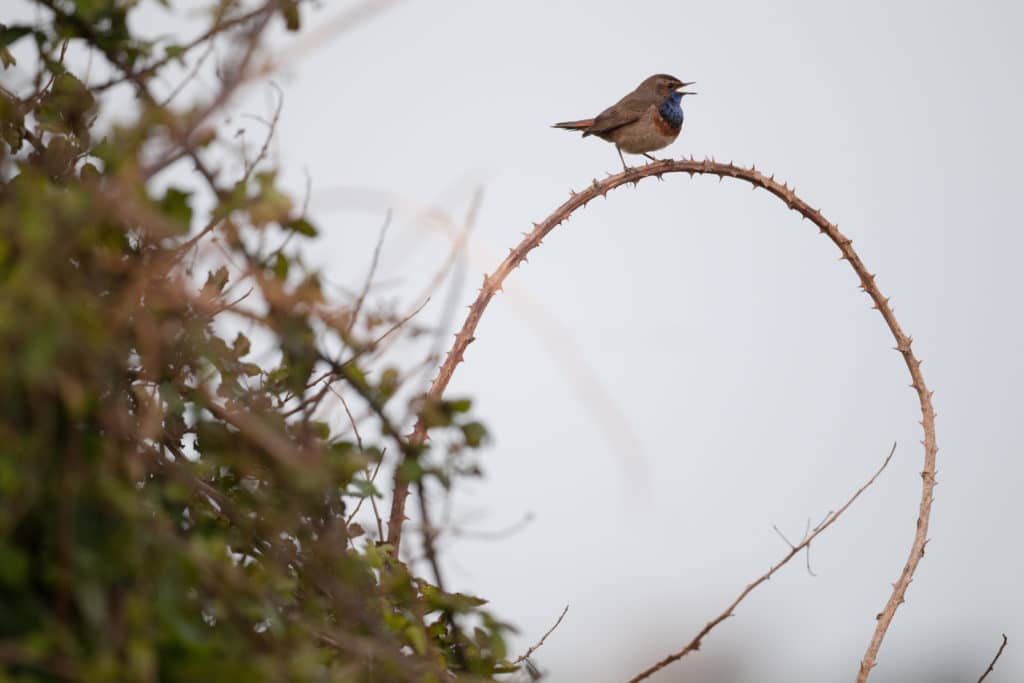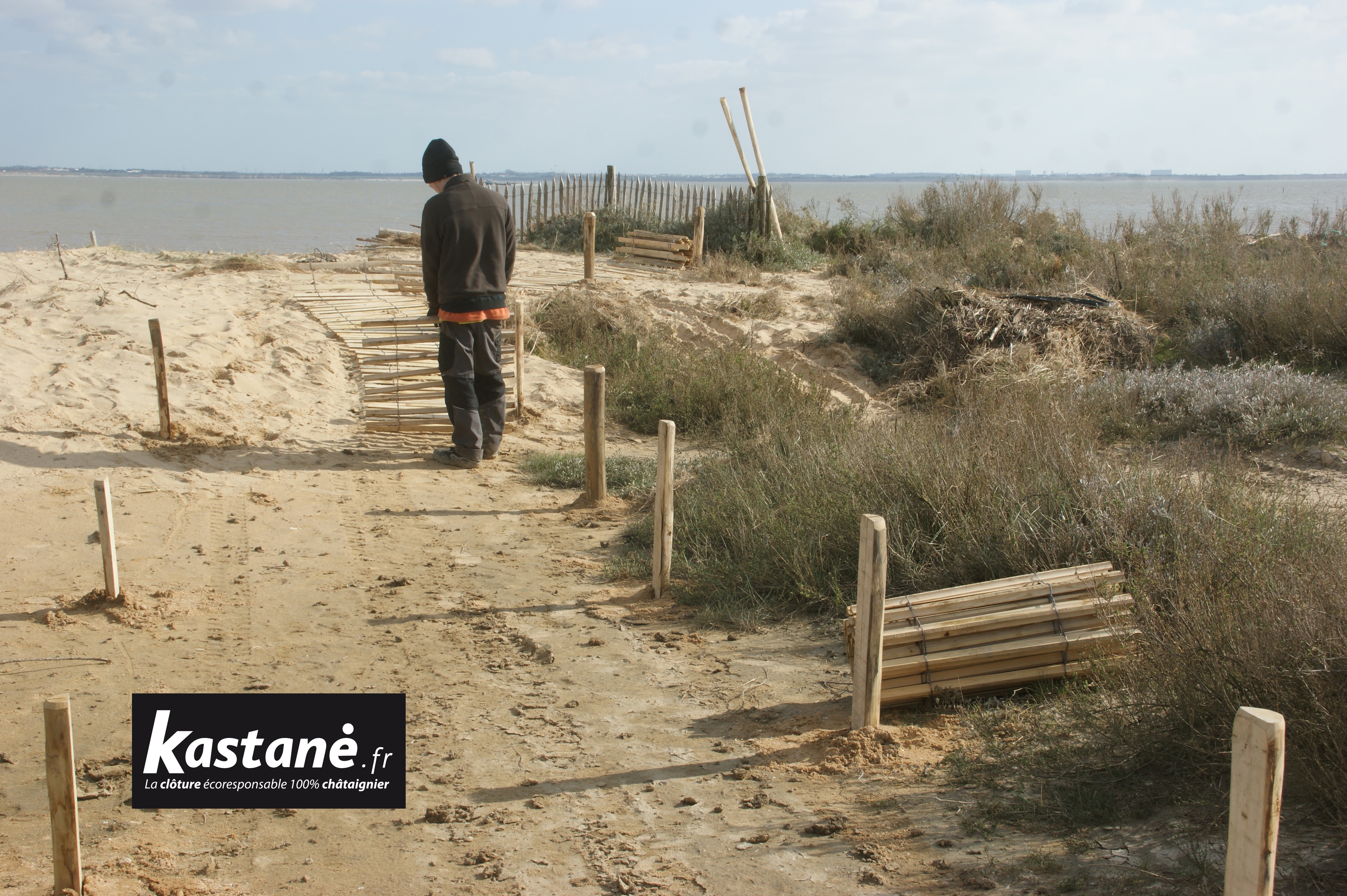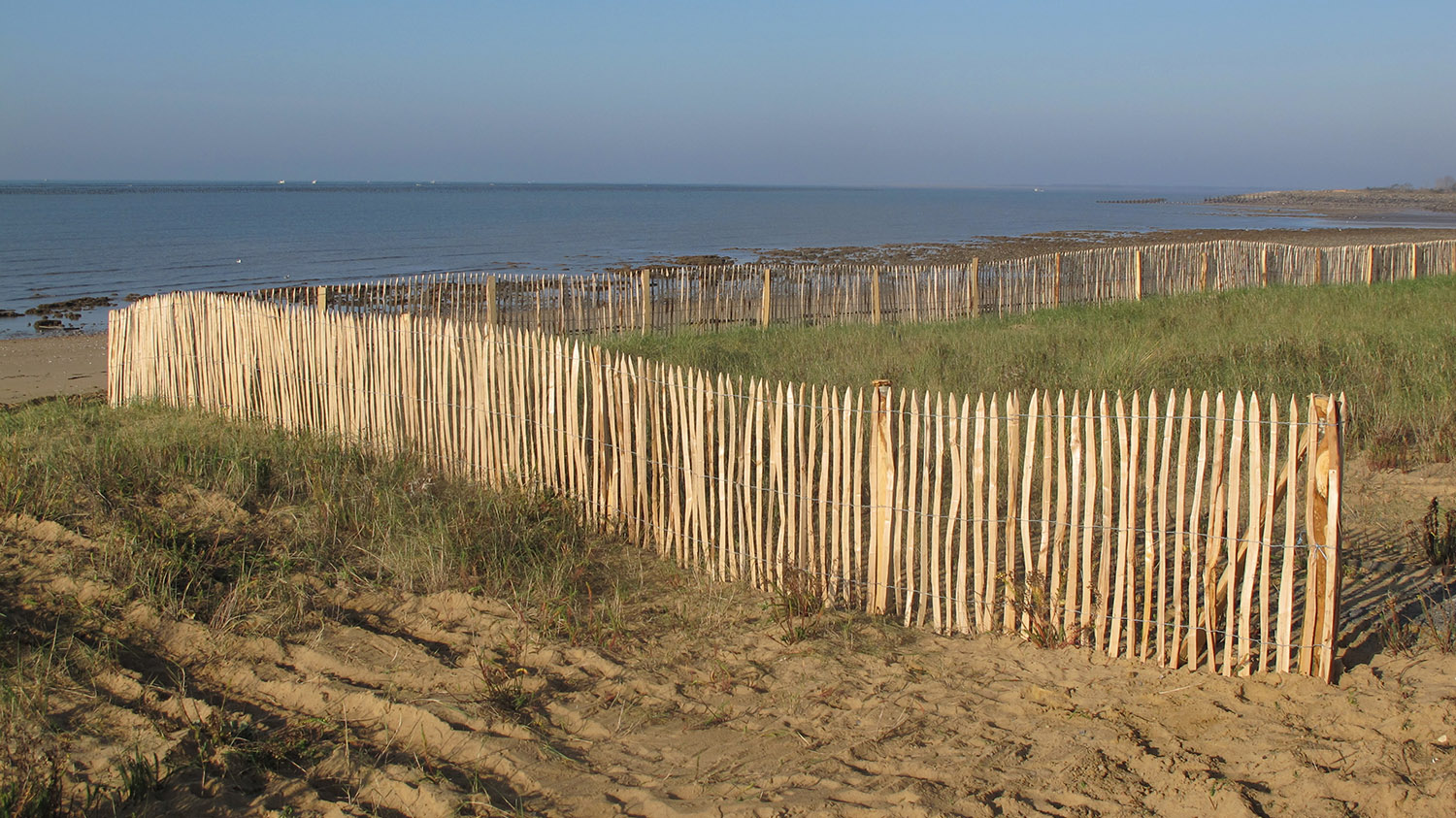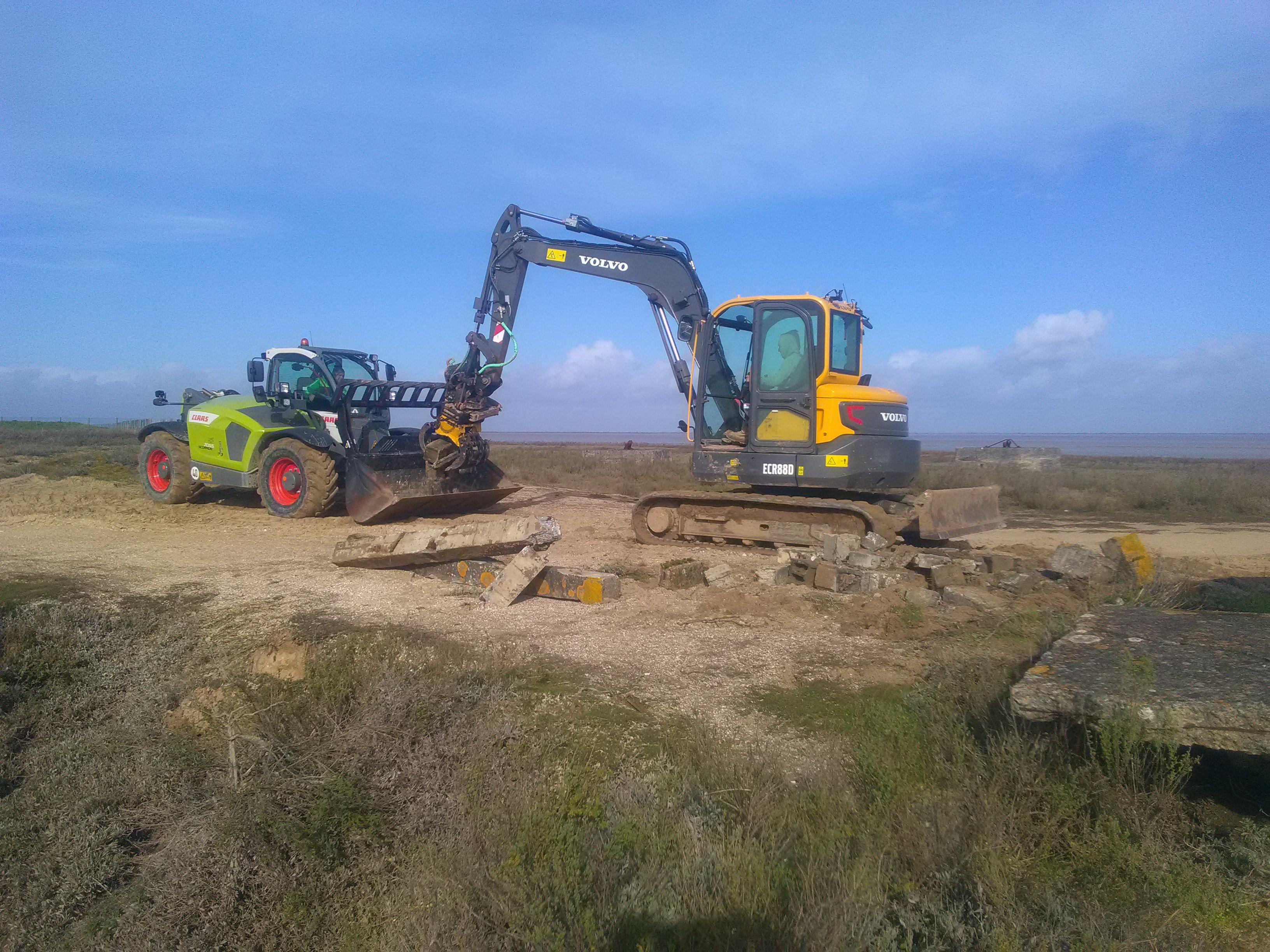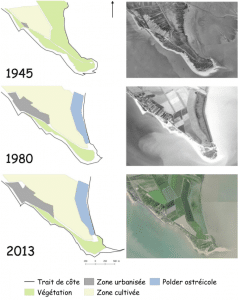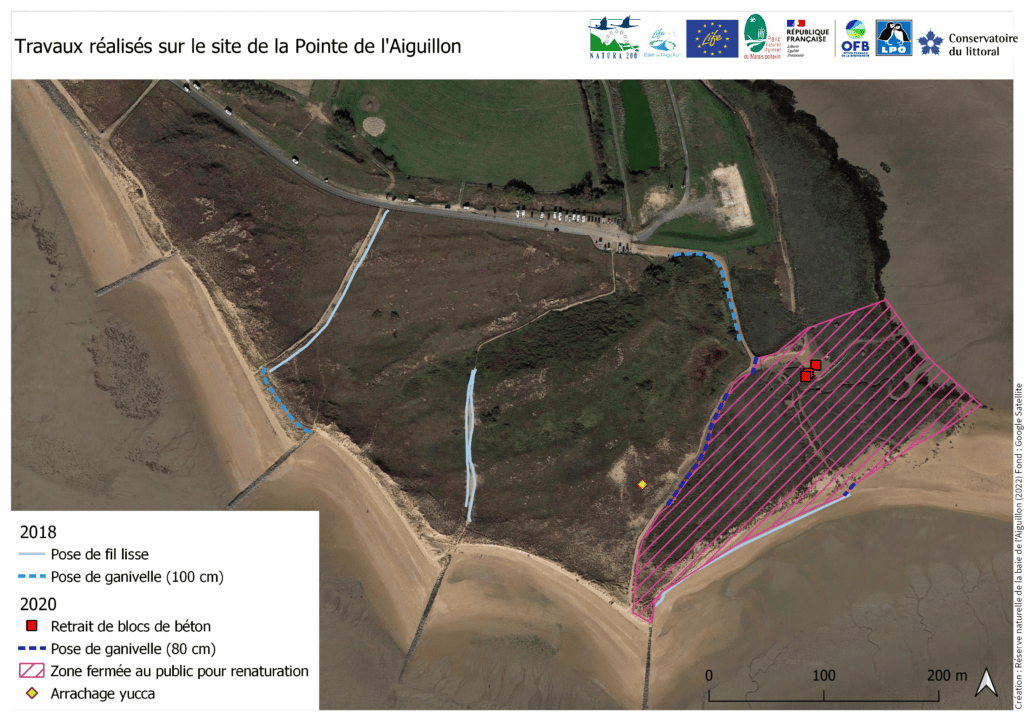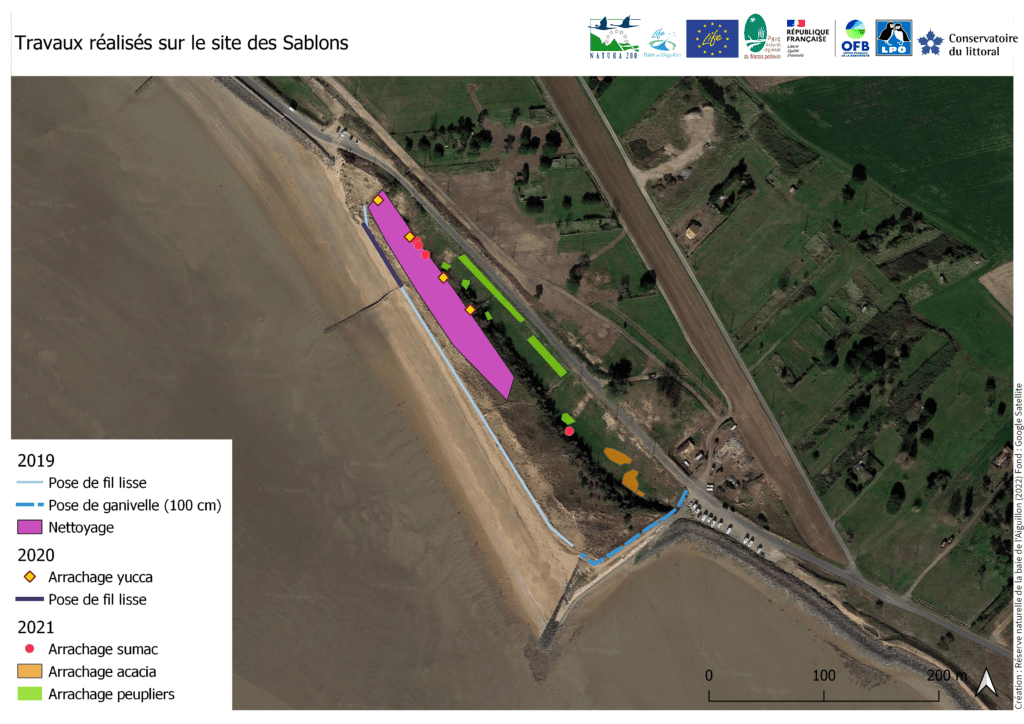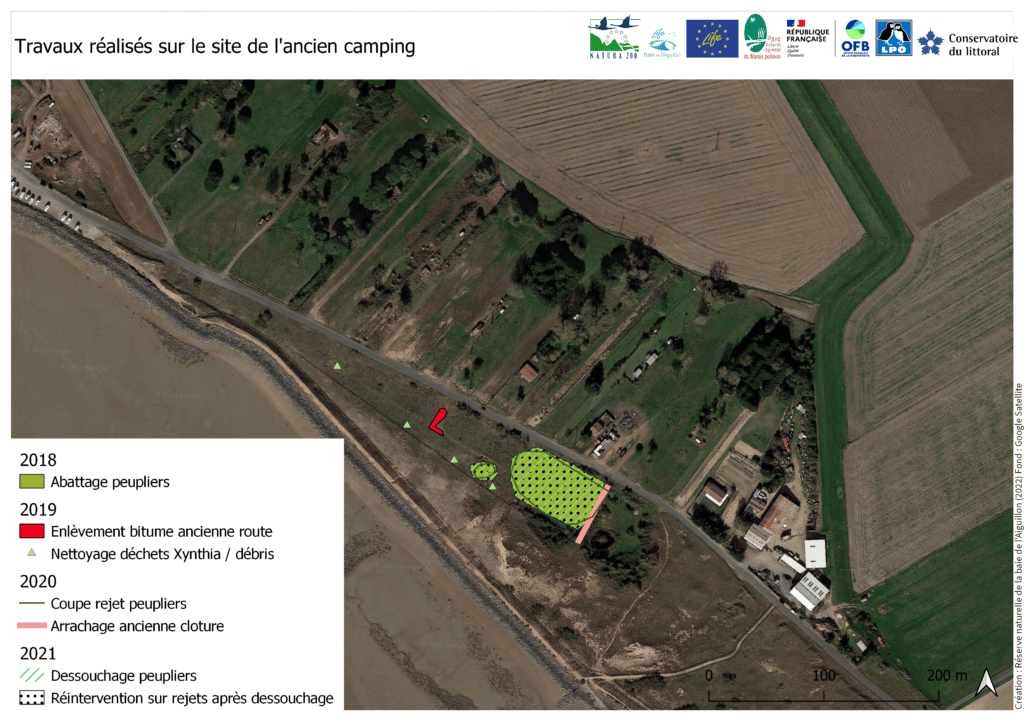Pointe de l’Aiguillon
The Pointe de l’Aiguillon operational action
The Pointe de l’Aiguillon is part of the Poitevin Marsh dune complex. This 40-hectare sandy spit, in the maritime public domain, is located at the mouth of the Lay River in the Vendée department. It presents all aspects of Atlantic dune habitats (beam “beach top”, mobile and stable dunes).
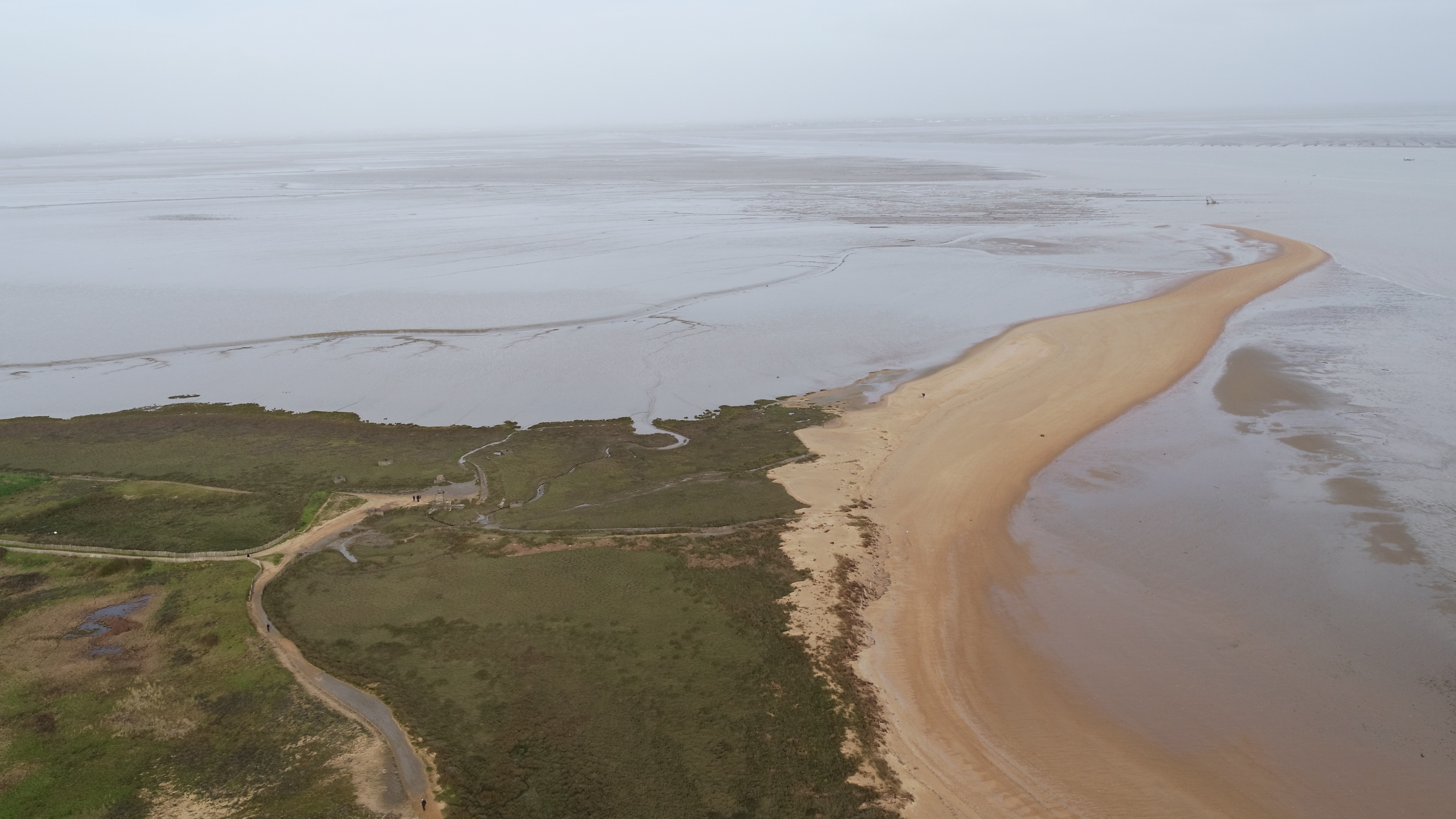
The Pointe de l’Aiguillon (c) Aiguillon Bay National Nature Reserve
A very diverse fauna and flora
characteristic of coastal wetlands
Bettering the channelling of human presence
related to a diversity of possible activities on the site (bathing, walking, shore fishing, bird watching)
A sand spit
in perpetual motion, situated at the southeast tip of the mouth of the River Lay
A PROTECTED SITE, BUT SUBJECT TO SIGNIFICANT DISTURBANCE
This site is classified by a Biotope Protection Decree (“APB”) of the Prefecture since 1998. It is home to protected species of European and national interest (Bluethroat Luscinia svecica, Tawny Pipit Anthus campestris, Odontites jaubertianus – a flowering plant endemic to north and central France, Silene potensis, etc.). The spit is also an excellent site for watching passerine migration in autumn and wader passage in winter.
Tourist activity at the Pointe de l’Aiguillon (beach activities, walking, fishing on foot, etc.) generates much human activity that needs to be channelled. It causes trampling damage of dune habitats of common interest and disturbance to wildlife. In addition, storm Xynthia in 2010 also modified the landscape.
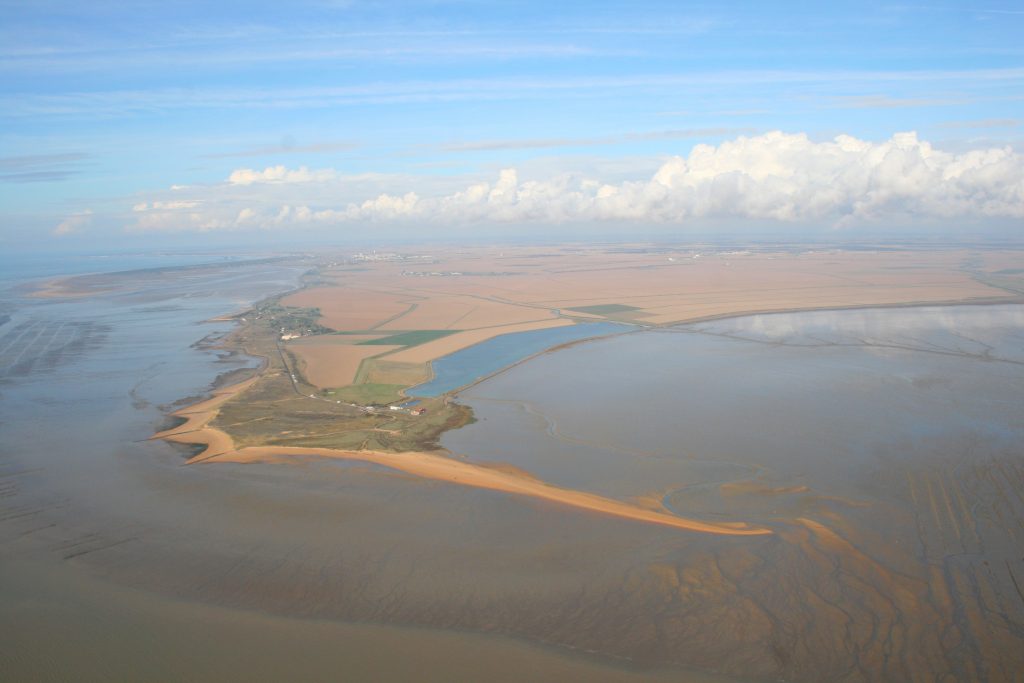
The Pointe de l’Aiguillon © Aiguillon Bay National Nature Reserve
PROTECT AND RENATURALISE
Actions of the LIFE project are a continuation of those actions undertaken under the Natura 2000 programme by the Marais Poitevin Natural Regional Park, the French Biodiversity Agency (OFB) and the Vendée Territories and Sea Departmental Directorate since 2011.The project plans to strengthen the channelling of the public in order to preserve dune habitats from trampling and stabilize the sand.
The aim is to restore a more “natural” character to the Pointe de l’Aiguillon
The actions are of different types:
- follow-up of a survey of human use in summer 2016 to understand why tourists and users came to the Pointe de l’Aiguillon,
- study assessing the benefits provided to users of the site (leisure, fishing on foot, well-being…)
- placing of wooden fencing, smooth wires and positioned cones to channel the public and fix the sand,
- removal of some of the concrete blocks,
- felling of poplars from a disused campsite, planted on the dune,
- biological monitoring in order to evaluate the work.
The work will take place over the 5 years of the LIFE project
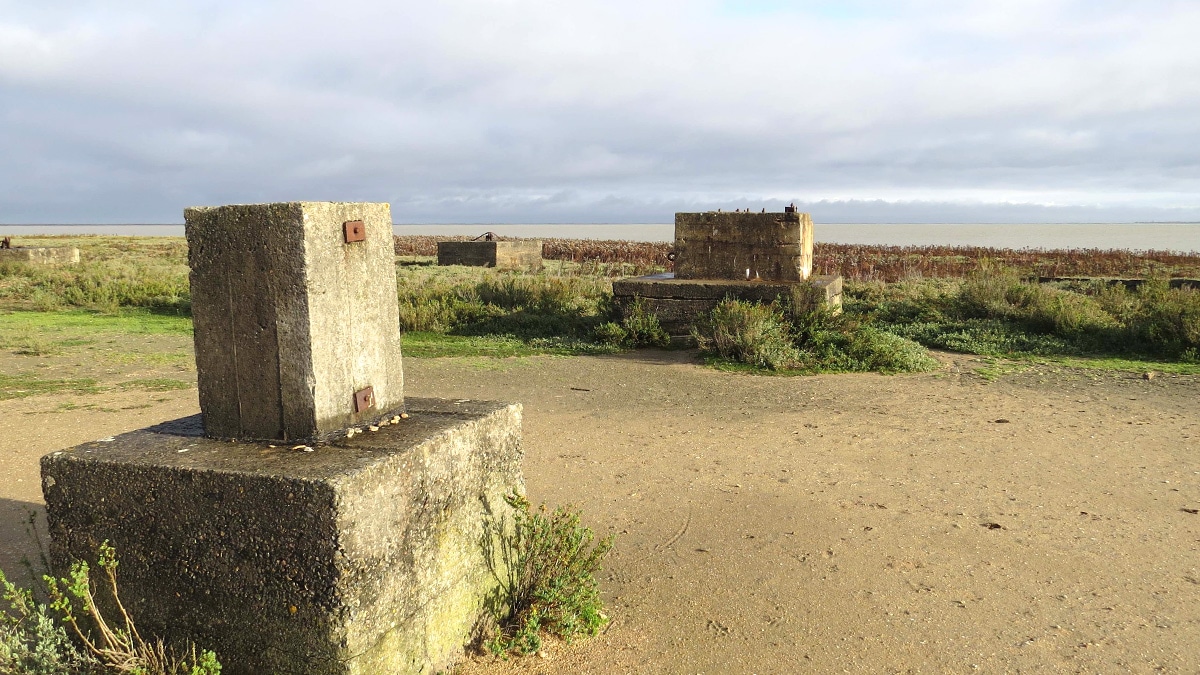
The Pointe de l’Aiguillon and the concrete blocks, traces of an old development © Régis Pasquier – PNR Marais poitevin
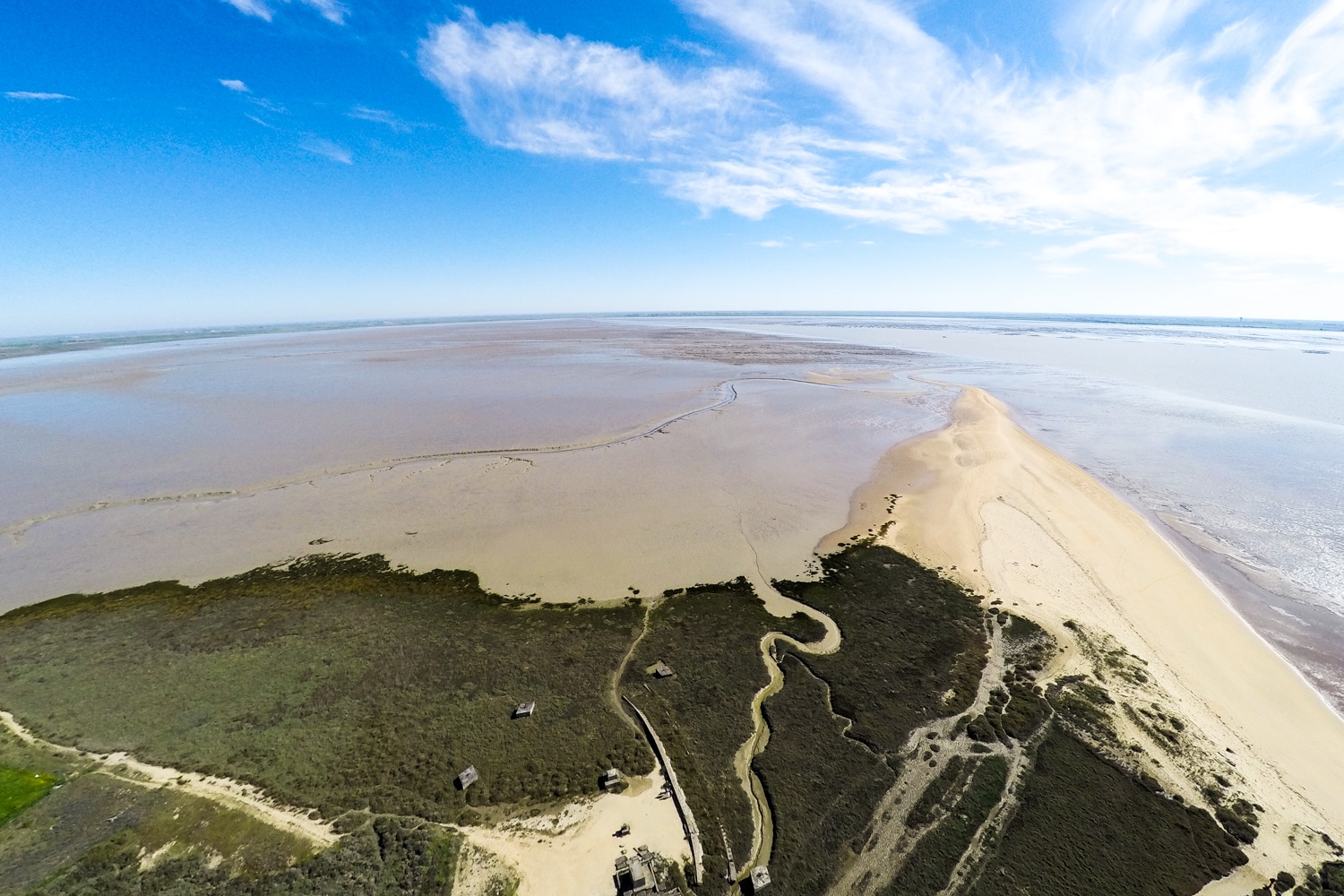
The Pointe de l’Aiguillon © Thomas Jouanneau / PHONIC LIPS
STUDY OF HUMAN USE OF THE POINTE DE L’AIGUILLON
The survey on summer tourist activity at the Pointe de l’Aiguillon carried out in 2016 indicates that the site is frequented mainly for nature activities (hiking, wildlife observation) and fishing on foot. The majority of those who replied were in favour of moving the car park that allows access to the site inland. These findings demonstrate that users are very supportive of a re-naturalisation of the site. The report can be downloaded here: Enquête sur la fréquentation touristique estivale de la Pointe de l’Aiguillon Enquête sur la fréquentation touristique estivale de la Pointe de l'AiguillonBIOLOGICAL MONITORING
In order to assess the impact of the work on the environment, biological surveys are carried out every year. A monitoring of breeding passerines and the Kentish plover on the Pointe de l’Aiguillon was carried out in the springs of 2017, 2018, 2019, 2020 and 2021 by the reserve team.The work carried out reinforces the nesting of species nesting in salt meadows and back-dune environments by reducing trampling and disturbance. The number of Kentish Plover breeders has been stable since the start of the project, and the number of chicks observed has been increasing since 2020. A nest was observed for the first time in the area closed to the public for renaturation in 2020. The installation of information panels on the reproduction of the plover seems to have a positive impact on the number of fledglings, by making walkers aware of the presence of this species on the beaches of La Pointe. Continued monitoring of nesting birds is necessary to assess the relevance of the work over the long term.
More information in the news section and on the biological monitoring page.
UNDERTAKEN WORK
The installation of an information panel, realised in partnership with the “Pays Né de la Mer” Community of Communes, since 2018 named the “South Vendée Littoral Community of Communes”. This panel was collectively designed in autumn 2017, in consultation with the project partners and installed on the Pointe de l’Aiguillon site during February 2018.
The first phase of work involved the installation of wooden fencing and smooth wires. This was carried out in March 2018 by AB Forest. The work has allowed for better channelling of the public thus avoiding trampling and deterioration of the dunes. 240 metres of fencing and 836 metres of wire were put in place. These installations are experimental as they involve a new design of fencing capable of capturing 1.4 times more sand than standard fencing.
The second phase of this work was carried out in December 2018 by the association ALIGATORE. This work involved the felling of trees at the disused campsite, necessary for the restoration of stable dune habitats. The branches were ground into chippings and used by La Faute-sur-Mer and L’Aiguillon-sur-Mer municipalities as mulch for various plantations.
The third phase of work involved the removal of concrete blocks and the cleaning of the old campsite (removal of tree stumps and remaining tarmac). The work took place in March 2019. All waste was disposed of using an adapted recycling system.
Additional work to install wooden fencing and smooth wire occurred within the limits of the Pointe de l’Aiguillon Biotope Protection area created by Prefectural Order and on Les Sablons beach, in October 2019. A new phase of block removal, installation of wooden fencing and smooth wires, and extraction of Yuccas (an invasive species recently established at the site) took place in September and October 2020.
Another operation of Yucca extraction took place in April 2021. Information panels on the Kentish Plover were installed in Spring 2021 to educate the public about the protection and nesting of this species. More information here.

